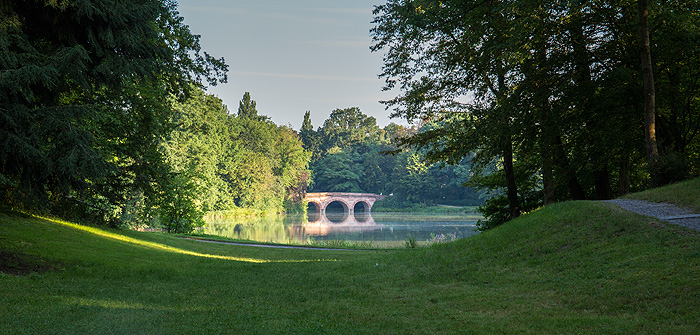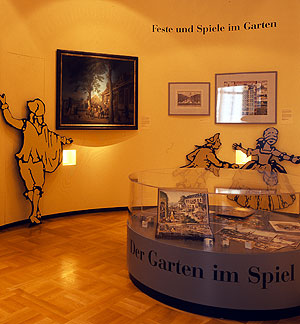About us > Garden department
Information:
Main information:
Introducing the garden department
Contact persons at the garden department
With its long and varied history, Bavaria has inherited a wide range of gardens in many different styles. While the gardens of Franconia are primarily those which were created for the bishops' residences – Aschaffenburg, Bamberg, Würzburg and Veitshöchheim – and the regents of small principalities – Ansbach, Bayreuth, Coburg – Old Bavaria is dominated by the parks of the electors and kings from the House of Wittelsbach in Munich, Schleißheim, Dachau, Feldafing, Linderhof and Herrenchiemsee.

These complexes reflect the development of garden design, beginning with the Renaissance and continuing via the baroque and rococo epochs to various types of landscape garden and gardens in the mixed style.
The best garden designers, architects and sculptors of the time such as Balthasar Neumann, Dominique Girard, Joseph Effner, Ferdinand Tietz, Friedrich Ludwig von Sckell, Joseph Peter Lenné and Carl von Effner worked for the Bavarian and Franconian rulers. These artists produced parks which were milestones in the development of garden design. They are classified as historic monuments in their own right or as part of listed ensembles under the law for the protection and preservation of historical monuments of the Free State of Bavaria.

Experts were also in charge of the continuous maintenance and further development of the gardens, as is demonstrated by the existence of the Court Garden Administrative Authority, set up in 1804 by the Bavarian State Ministry of Finance and the forerunner of the present garden department, which made it possible to preserve many outstanding gardens from previous eras.
After the end of the monarchy, most of the gardens belonging to royalty were taken over by the Bavarian state and today they are maintained and made accessible to the public by the Bavarian Administration of Palaces, Gardens and Lakes. The various specialized sections within this institution work together to preserve this heritage.

The Bavarian gardens include well-known parks such as Nymphenburg Park and Schleißheim Court Garden, the English Garden in Munich, the Linderhof Park, the court gardens of Würzburg and Veitshöchheim, the Bayreuth Gardens and many others. Every year around 15 million people visit the parks run by the Bavarian Palace Administration.
The garden department's responsibilities include maintaining, researching and completing the gardens, as well as communicating to the public their historic significance.

It also runs the Garden Museum Fantaisie Palace near Bayreuth, Germany's first garden museum. Here visitors are given an overview of the history of garden design from the 17th to the 19th centuries.
Distributed throughout the region the Bavarian Administration of Palaces, Gardens and Lakes has 17 external administrative offices, each with their own personnel. These offices are responsible for looking after 32 historic parks and 15 green areas next to historic buildings, as well as numerous lakeshore areas, in accordance with the instructions of the garden department. The continuity this provides facilitates compliance with the requirement of the Bavarian Preservation Law that the gardens be "maintained in good condition with the requisite expertise and protected".

Facebook Instagram YouTube